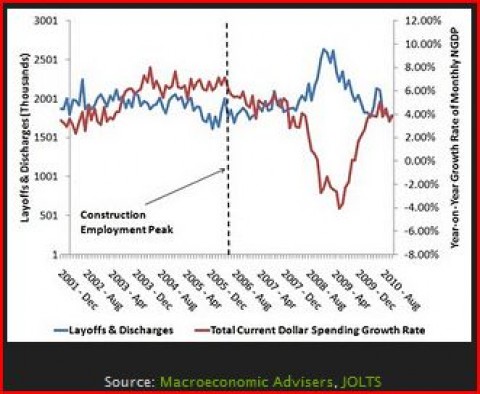“I’m a little confused”
It really sucks not having a transcript of the press conference, which I think contained some rather stunning remarks. I tried to write down notes, but these won’t be exact quotations.
Early on someone asked a very apt and pointed question (almost Svenssonian), which went something like this:
I’m a little confused. The reports seems to show at the end of 2014 the unemployment rate at or above 7% and inflation at or below 2%. And yet 11 out of 17 members of the committee wanted to raise rates by that time. If unemployment and inflation are in fact symmetrical objectives, how can that be the case? And is there any tolerance to catchup inflation in the service of catch-up growth?
Bernanke seemed to ignore the catch-up inflation question. The he started talking about the fact that they had done a lot already, listing some of the policy moves. Then he talked about the complexity of the problem, and that they weren’t going to mechanically make any decision based on these interest rate forecast, but rather consider how the economy evolved, blah, blah, blah. So he was downplaying the implication of some tightening in 2014. Then things got more interesting:
Yes, if inflation is going to remain below target for an extended period and unemployment progress is very slow then I think your implicit question is right. There is a case for additional policy action. We’ll continue to observe the situation and we’re certainly prepared to look for additional ways to provide support if we continue to have this unsatisfactory situation. (italics added)
I found this interesting, because the reporters “implicit question” wasn’t a question at all, but an implied critique of Fed policy. I read Bernanke as agreeing with that critique. But that’s just one question, and long rambling answers can be misinterpreted. Fortunately, the question was asked again about 30 minutes later, and once again in a quite pointed way:
Why shouldn’t someone looking at these numbers from the outside say that as aggressive as you say you’ve been, and as aggressive as you have been, it doesn’t look like you’re meeting any of your goals for the next 3 years on the economy. So why isn’t the Fed doing more now?
Again Bernanke began by emphasizing how much they had done, and that they hadn’t been passive. Then he took a shot at inflation hawks, pointing out that they’d been continually wrong in predicting that the massive balance sheet increases would lead to inflation. Then things got interesting:
If the situation continues with inflation below target and unemployment declining at a rate which is very, very slow, then more [sic] our framework, the logic of our framework says, we should be looking for ways to do more. It’s not completely straightforward because we are working with a variety of nonstandard policy tools. We can’t just lower the fed funds rate by 25 basis points like in the good old days. But your basic point is right. We need to adopt policies that will both achieve our inflation objectives and help the economy recover as quickly as feasible. I would say that your question, actually and the earlier question, shows the benefit of explaining this framework, because the framework makes very clear that we need to be thinking about ways to provide further stimulus if we don’t get improvement in the pace of recovery and a normalization of inflation. (italics added)
This post took a long time to put together, so I won’t have time to say more tonight. But two different reporters asked questions that sharply critiqued monetary policy, pointing out that the logic of Bernanke’s emphasis on the dual mandate suggested that the Fed should be doing more right now, and should not be thinking of raising rates in 2014 if economic conditions were as currently forecast by the Fed. In both cases Bernanke made the required pro-forma statements that they had already done a lot, but then instead of defending the honor of the Fed he basically agreed with the reporters:
I think your implicit question is right. There is a case for additional policy action.
But your basic point is right. We need to adopt policies that will both achieve our inflation objectives and help the economy recover as quickly as feasible.
As I watched the press conference I found myself agreeing with Bernanke over and over again, on all sorts of points. I don’t think his views are all that far from mine. So why isn’t the Fed doing more? All Bernanke can say is that they’ve done a lot. And that it’s a complicated problem. And yes, “your implicit question is right”—there is a case for doing more under current and future expected conditions. I’d expect QE3 this year. And I’d also expect Bernanke’s memoirs to say he was occasionally frustrated by both the committee and outside pressure from politicians, and that the Fed should have moved at an even more aggressive pace.
There is more of interest from the press conference. But no time tonight–maybe tomorrow.


